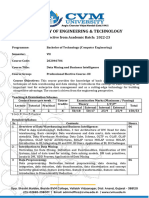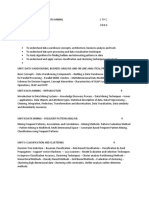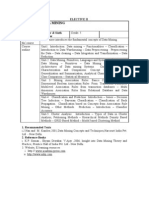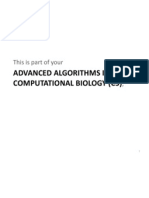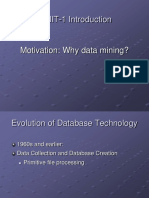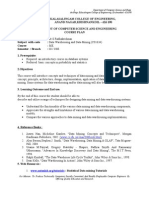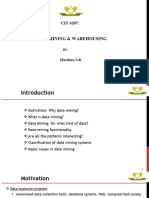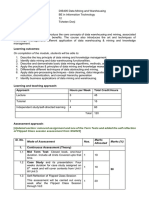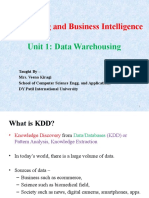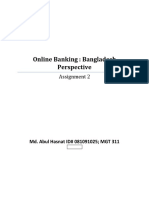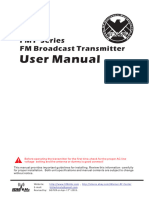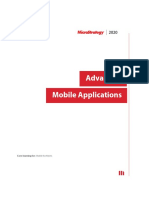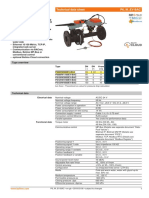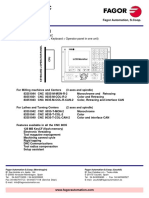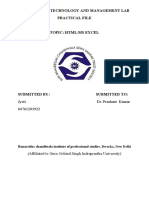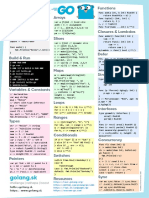0% found this document useful (0 votes)
246 views6 pagesKnowledge Discovery Data Mining - Syllabus
This document outlines a course on Knowledge Discovery and Data Mining. The course is intended for first year MCA students in their first semester. The objectives are to introduce concepts of data warehousing, data mining techniques like classification, clustering and association rule mining. Students will learn how to analyze data, identify problems and apply relevant algorithms. They will also learn about business intelligence applications. The course covers topics like data warehousing, expert systems, association rules, classification, clustering and business intelligence over 8 sessions each. Assessment includes practical assignments in WEKA and a written exam evaluating concepts from the course.
Uploaded by
Vishal AnandCopyright
© © All Rights Reserved
We take content rights seriously. If you suspect this is your content, claim it here.
Available Formats
Download as DOCX, PDF, TXT or read online on Scribd
0% found this document useful (0 votes)
246 views6 pagesKnowledge Discovery Data Mining - Syllabus
This document outlines a course on Knowledge Discovery and Data Mining. The course is intended for first year MCA students in their first semester. The objectives are to introduce concepts of data warehousing, data mining techniques like classification, clustering and association rule mining. Students will learn how to analyze data, identify problems and apply relevant algorithms. They will also learn about business intelligence applications. The course covers topics like data warehousing, expert systems, association rules, classification, clustering and business intelligence over 8 sessions each. Assessment includes practical assignments in WEKA and a written exam evaluating concepts from the course.
Uploaded by
Vishal AnandCopyright
© © All Rights Reserved
We take content rights seriously. If you suspect this is your content, claim it here.
Available Formats
Download as DOCX, PDF, TXT or read online on Scribd
/ 6
